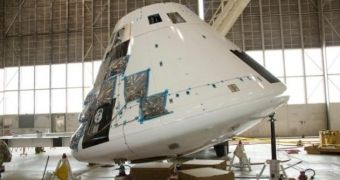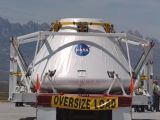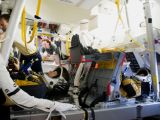The Orion Crew Exploration Vehicle, the segment of Project Constellation that is planned to take astronauts to low-Earth orbit and the Moon starting 2015, has recently passed its preliminary design review test. Even though this is good news, its faith is still unclear, considering the fact that the future of the ARES I delivery system, its carrier vehicle, is still uncertain. The recent review was not a full one, in that the inspectors only checked to see if there were any glaring problems with the design. Under the current plan, Orion needs to start flying by 2015, and has to take astronauts to the Moon by 2020.
“I'm very excited about the design of this spacecraft. It's a very capable spacecraft not just for low-Earth orbit, but also for returning astronauts to the vicinity of the moon,” the Manager of Project Constellation, Jeff Hanley, said. In addition to Orion and ARES I, the Project also includes the ARES V heavy-lift rocket, and the Altair Lunar Lander, which will be the vehicle the astronauts will use to actually touch down on and take off from the Moon.
Orion was originally designed to carry six people to orbit and beyond, so as not to reduce NASA's capabilities extensively. The space shuttles currently carry seven crew members each, but can accommodate as much as 14, during a rescue mission, for example. However, in order to maintain the 2015 deadline, that number was scaled back for the first versions of the craft, to only four astronauts. If the Project fares well, and the need arises, managers will probably revert to the six-seat configuration in the future, Space reports.
The White House-appointed review panel that has been investigating NASA for the past few months has drawn up four strategies for the agency's future until now, but only one includes ARES I. If the rocket is removed, then it would be years before Orion is ready to fly, as extensive modifications would have to be made. “It's important for folks to understand that the rocket and the spacecraft fly as an integrated system. So whatever we do with respect to the launcher, we would have to go back and redo, to some extent, work that is already done,” Hanley said on Tuesday, in a teleconference.
“We have a few weeks left to wait and see what happens with this review and what direction Charlie Bolden and the team wants to take us. So we wait with great anticipation,” the manager concluded.

 14 DAY TRIAL //
14 DAY TRIAL // 

